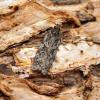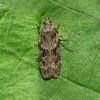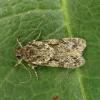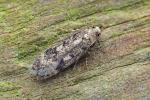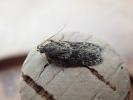35.102 Gelechia muscosella Zeller, 1839
Status and Distribution
Scarce, occuring at several well scattered sites in eastern and south-east England such as the broads and fens of East Anglia, a golf course with a large wetland area in Suffolk, coastal areas of Kent and a few wetland nature reserves in South Yorkshire, two of which were former industrial sites. Found for the first time in Huntingdonshire in 2015 and Hertfordshire in 2016.
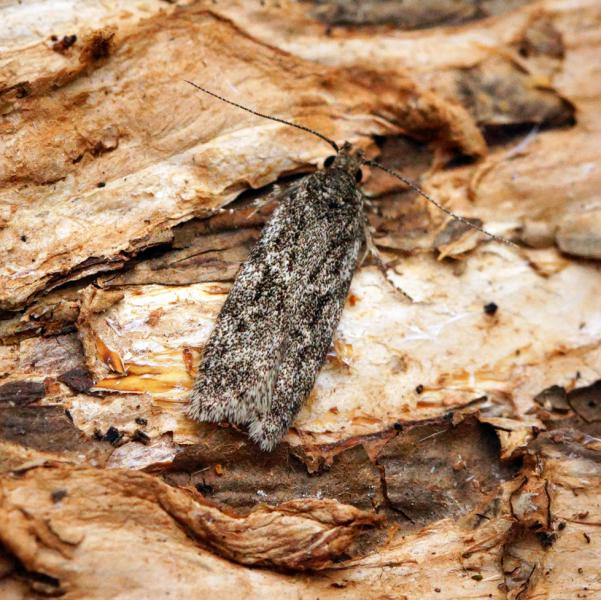
Provisional map
Foodplant and Larval Feeding Signs
Probably on Salix spp. such as Salix caprea (goat willow), see plant distribution map, and Salix cinerea (grey willow). Possibly also on Populus spp (poplar).
In Britain may feed in catkins or spun shoots of Salix spp (see details under 'Finding the moth').
In Germany during April 2015 feeding in catkins of Salix caprea was confirmed and the moth subsequently bred through.
Habitat
Associated with wetland sites such as Fenland, wet scrubby areas on coastal shingle, disused quarries and damp estuarine field edges.
Finding the Moth
Larva: unknown in Britain. Some historic reports suggest the larva feeds in catkins of goat willow and also poplars while further reports indicate it rolls leaves of sallows after leaving the catkins. In 1989, a large number of female catkins and spinnings were collected from a known site for the moth but no moths were reared. Sallow and aspen catkins collected in 1996 likewise failed to produce any of this species. In 1997 a larva matching the original larval description was found in a terminal spinning on grey willow but was parasitised. In 2015 seedheads from Salix cinerea were collected from a known site and a few larvae very closely resembling this species were found feeding in spinnings on the female catkin - none were bred through.
Photographs taken on 7th April 2015 in Bayern, Germany, of a larva on a Salix caprea catkin ( http://www.lepiforum.de/lepiwiki.pl?Gelechia_Muscosella ) demonstrate the larva was subsequently bred through.
Adult: can be found resting on the trunks of sallows or disturbed from the foliage; also comes to light.
Similar Species
Because of the large range in size (wingspan 12-17mm), smaller specimens, particularly if worn, might be confused with other dark grey species such as Carpatolechia notatella, which has a prominent black basal spot on the forewing.
When fresh, G. muscosella has a moss-green tinge to the forewing which can be useful to separate this from other Gelechia species.
G. muscosella has the upperside of the basal three segments of the abdomen an ochreous-yellow colour, a feature also present in G. nigra (see below) and G. cuneatella. The latter has has more elongate forewings and the second segment of the labial palps triangular in shape.
G. sororculella lacks the abdominal ochreous colouring and usually has a black spot at one third on the forewing broadly surrounded with white. The narrowly white-ringed dot in G. muscosella, if present, is in the middle of the wing.
There is a slight overlap in size with the generally larger Gelechia nigra which also has the ochreous yellow abdominal segments. This forewing of this species is black in colouration compared to the greyer mottled forewing of G. muscosella. If there is any doubt then dissection is recommended.
Single brooded with the meagre number of records suggesting a flight period during June, July and occasionally August.
Earliest: 5th June 1987 (VC15)
Latest: 24th August 1889 (VC29)

